Specialists in the Field: Rockaway! 2018
Wren Krisztin at Narcissus Garden by Yayoi Kusama
Communications Digital Content Coordinator Wren Krisztin shares their most recent venture to Rockaway! 2018.
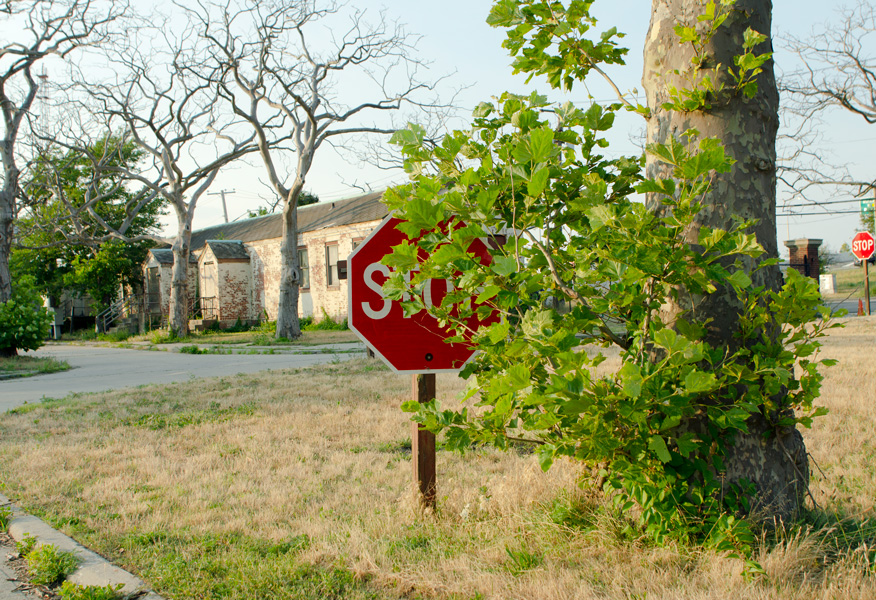
Fort Tilden entrance at Beach 169th Street. Photo by Lauren Kristin.
Rockaway! is an ongoing public arts project conceived by Klaus Biesenbach, Director of MoMA PS1, in collaboration with Patti Smith, artist and resident of the region. Partnering with Jamaica Bay-Rockaway Parks Conservancy and the National Park Service, Rockaway! has drawn continued public attention to remaining damages wrought by superstorm Sandy, as well as remarkable community efforts to rebuild, demonstrating the dual fragility and resilience of the locale.
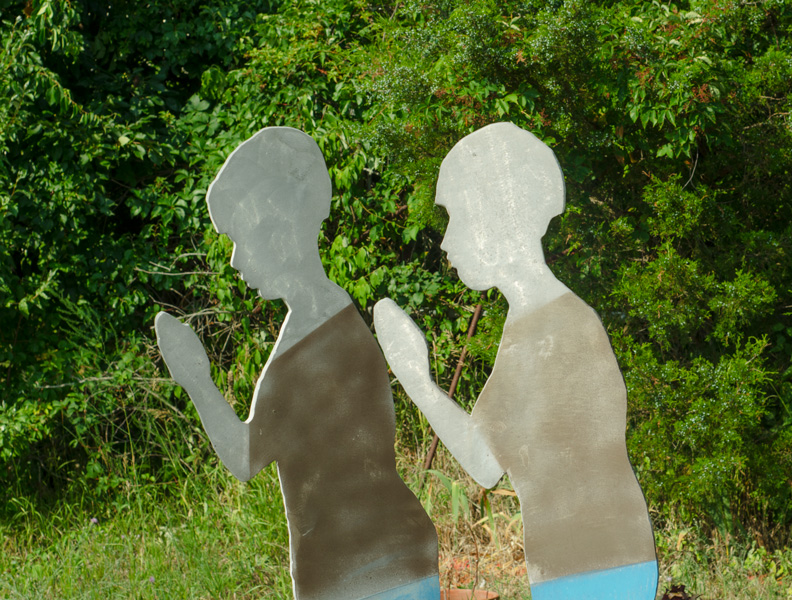
Sculptures by an unknown artist in the backyard of the Rockaway Artists Alliance gallery. Photo by Lauren Kristin.
Fort Tilden, the location for Rockaway! exhibitions, is a former U.S. Army Coast Artillery Post built as emergency fortification during World War I. It is incorporated by Gateway National Recreation Area, which became the first urban national park in America in 1972 and contains over 27,000 acres situated across three boroughs and New Jersey. This is the fifth Rockaway! installation since Sandy ravaged the region in 2012.
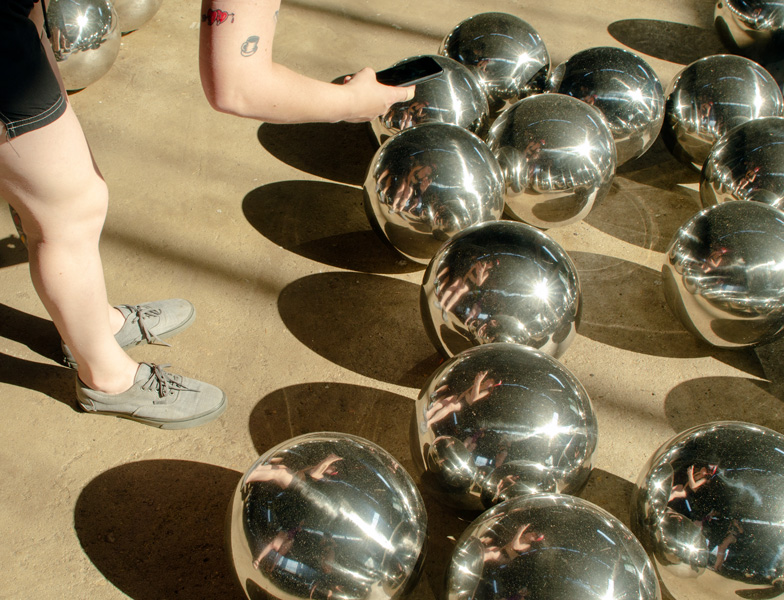
Narcissus Garden by Yayoi Kusama, 2018. Photo by Lauren Kristin.
This year’s exhibition is an installation of Yayoi Kusama’s Narcissus Garden hosted by the Rockaway Artists Alliance. A looped projection of the artist’s short film Self-Obliteration played in the gallery portion, alongside photos of her 1960s performances, while the actual installation of Narcissus Garden was put up in a former train garage located behind RAA gallery.
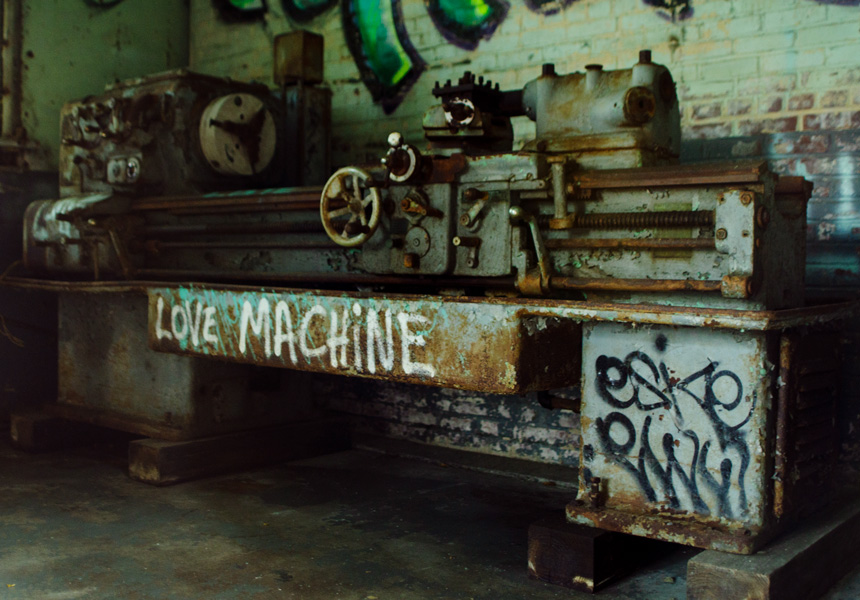
Defunct machinery at the installation site for Narcissus Garden – a former train garage. Photo by Lauren Kristin.
The first public exhibition of Narcissus Garden was an unofficial installation at the 1966 Venice Biennale, in which the artist dressed in a gold kimono and sold the spheres for 1,200 lire, or about $2 each. Kusama’s performance–perceived paradoxically as both self-promotional and critical of commercialized art–is now seen as a seminal point in the arc of her career, as it signaled her movement into the realm of political actions and public installations. Journalist and noted art director Steven Heller recalled in The Atlantic, “I’d never met anyone as self-promotional as Kusama.”
Kusama was born in 1929 in the provincial city of Matsumoto, Japan, and worked in a factory sewing parachutes as a teenager during World War II. She went on to graduate from Kyoto Municipal School of Arts in 1949, despite familial discouragement regarding her pursuit of the arts. In her autobiography Infinity Net she describes a desire to leave her hometown for France or the United States, as well as her efforts to do so; she wrote directly to the president of France, Georgia O’Keefe and Kenneth Callahan with characteristic audacity.
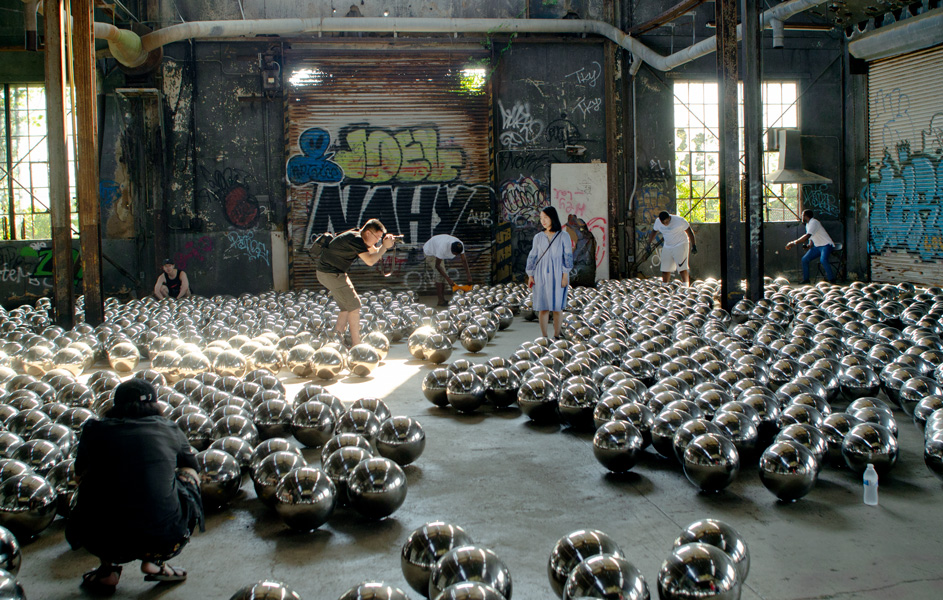
View from the font of the installation, Narcissus Garden, 2018. Photo by Lauren Kristin.
Eventually, Kusama was sponsored by a relative to come to Seattle, and soon after moved to New York. Her first east coast show was in 1959. Though she soon developed a following and showed extensively, she remained financially dependent on her parents’ support from abroad. By 1966 her paintings had burst through their borders as her chosen media evolved from collage to sculpture and installation. In the following years she distanced herself from galleries and instead incited performances she called “naked happenings,” in which she painted nude bodies with polka dots in tourist hotspots until authorities arrived. In her film, Kusama’s Self-Obliteration, she could be described as an absurdist, painting red polka dots onto the surface a pond, only to have them float away in the water.
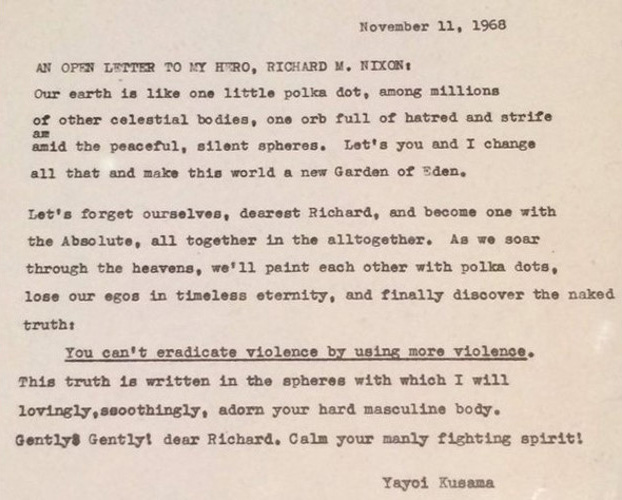
Letter to Richard Nixon, 1968. Courtesy of Phaidon.
The publicity Yayoi Kusama received in 1960s New York briefly surpassed that of Andy Warhol. However, her parents ultimately withdrew their financial support, unhappy with the rumors they heard of their daughter’s activity in the United States. In 1970, a crestfallen Kusama withdrew to Tokyo, where she later entered a mental hospital. Her work was essentially underground for the next two decades.
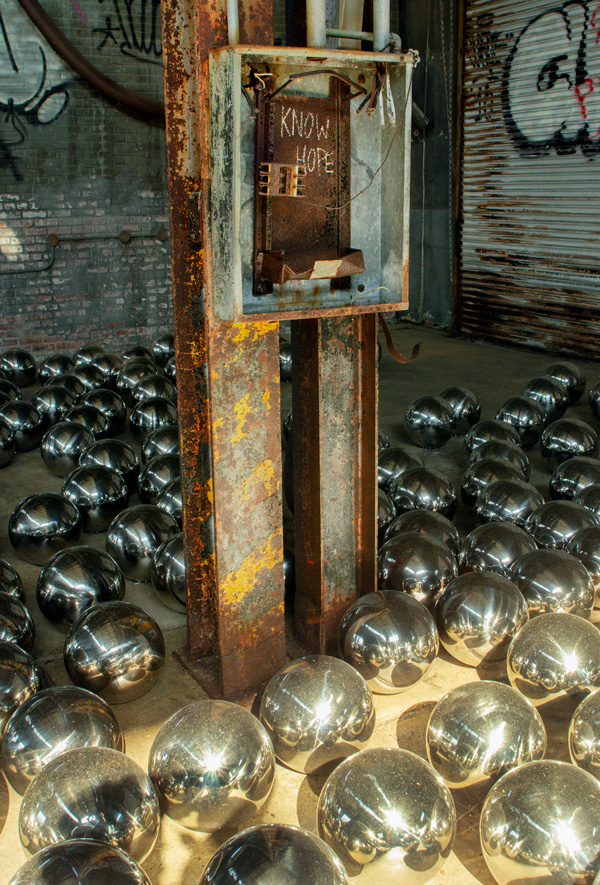
“Know Hope,” in Narcissus Garden by Yayoi Kusama.
Photo by Lauren Kristin.
Now, at 89 years old, Yayoi Kusama is an internationally recognized fixture in the art world. Narcissus Garden was created well before social media, but like many of the other pieces in her oeuvre, they are exhibitionist by nature and thus well-suited to share on such platforms. While wandering through the “garden” a few visitors were meditative, but most, including myself, crouched like Narcissus, often with phones, peering at our own bulbous reflections.
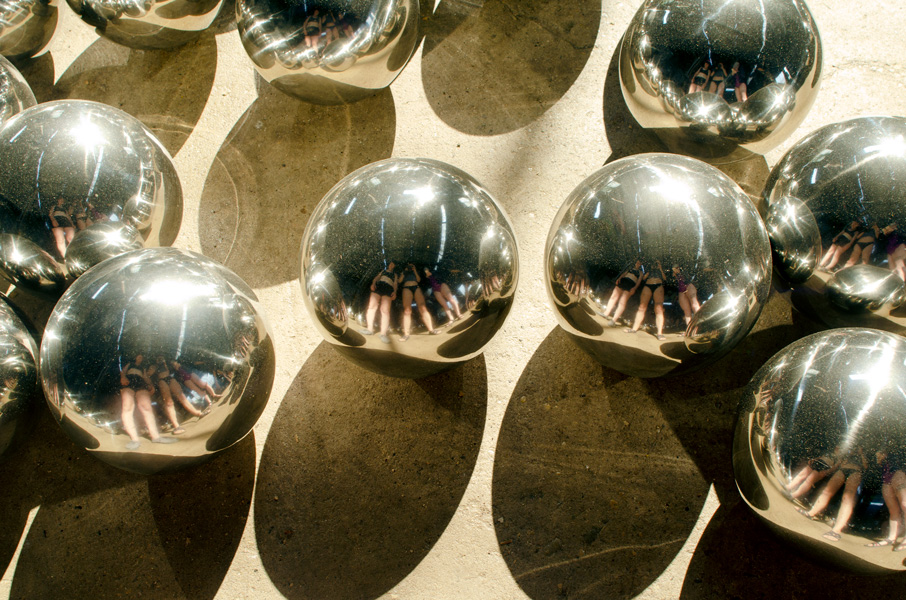
Narcissus Garden by Yayoi Kusama. Photo by Lauren Kristin.
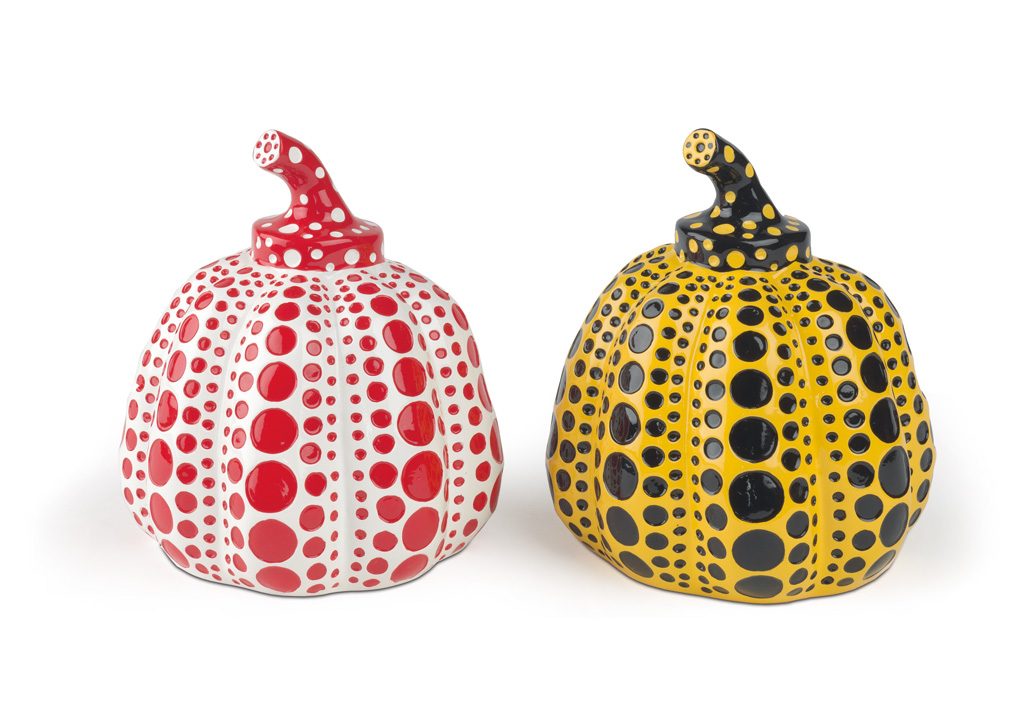
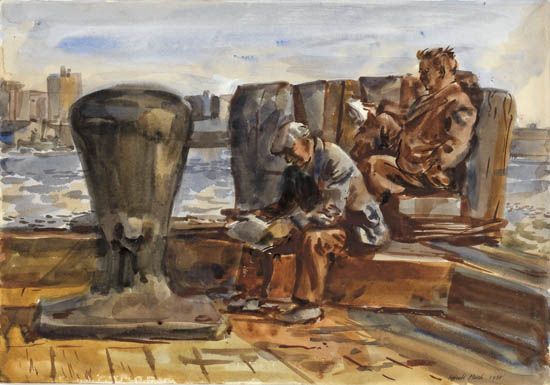
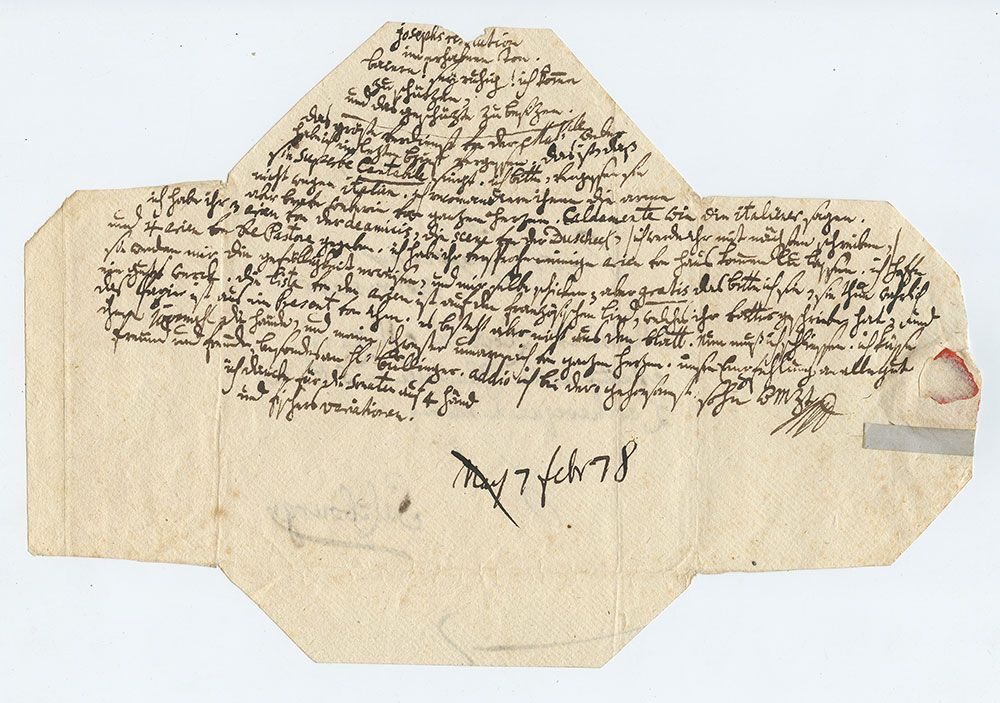
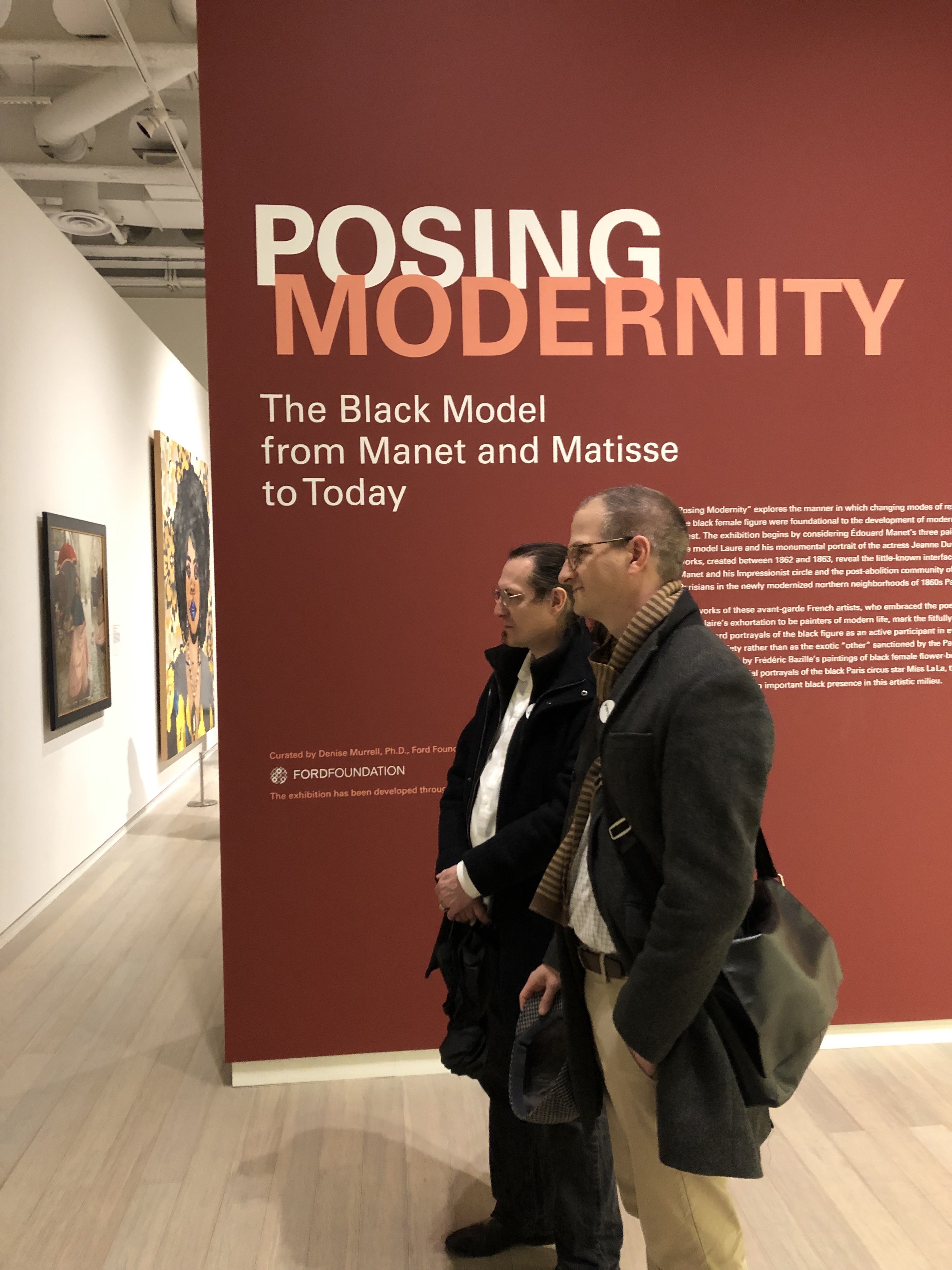










![Grace Meschery-McCormack shares about two copies of Fernando de Rojas’s ‘La Célestine,’ including a limited edition copy illustrated by Pablo Picasso.
At auction April 22. Learn more about the works at the link in our bio.
#Rarebooks #rarebookdealer #antiquarianbooks #auctions
_______________________________________
Music Credit:
Schubert - Piano Quintet in A major ‘The Trout’, D. 667 - IV. Andantino – Allegretto
Music provided by Classical Music Copyright Free on Youtube [https://tinyurl.com/visit-cmcf]
Watch: • Schubert - Piano Quintet in A major ‘...]](https://scontent-iad3-1.cdninstagram.com/v/t51.75761-15/491443494_18499096345036585_5935932878956098058_n.jpg?stp=dst-jpg_e35_tt6&_nc_cat=107&ccb=7-5&_nc_sid=18de74&_nc_ohc=OlBShB8qEWAQ7kNvwHbrXqd&_nc_oc=Adn09Fh3YL-11OkpQcrYGgFN9beLpm0IfGUn2bwN7iJs6d4v8qMeP8kSYmCw82y2ewU&_nc_zt=23&_nc_ht=scontent-iad3-1.cdninstagram.com&edm=AM6HXa8EAAAA&_nc_gid=I48jsxJwo9ZoAWYn9au3wg&oh=00_AfHBUMgxSwlbGJ-J9grZV8YWn6QTPcWAhOxtdTR-YDtzCA&oe=68199551)




